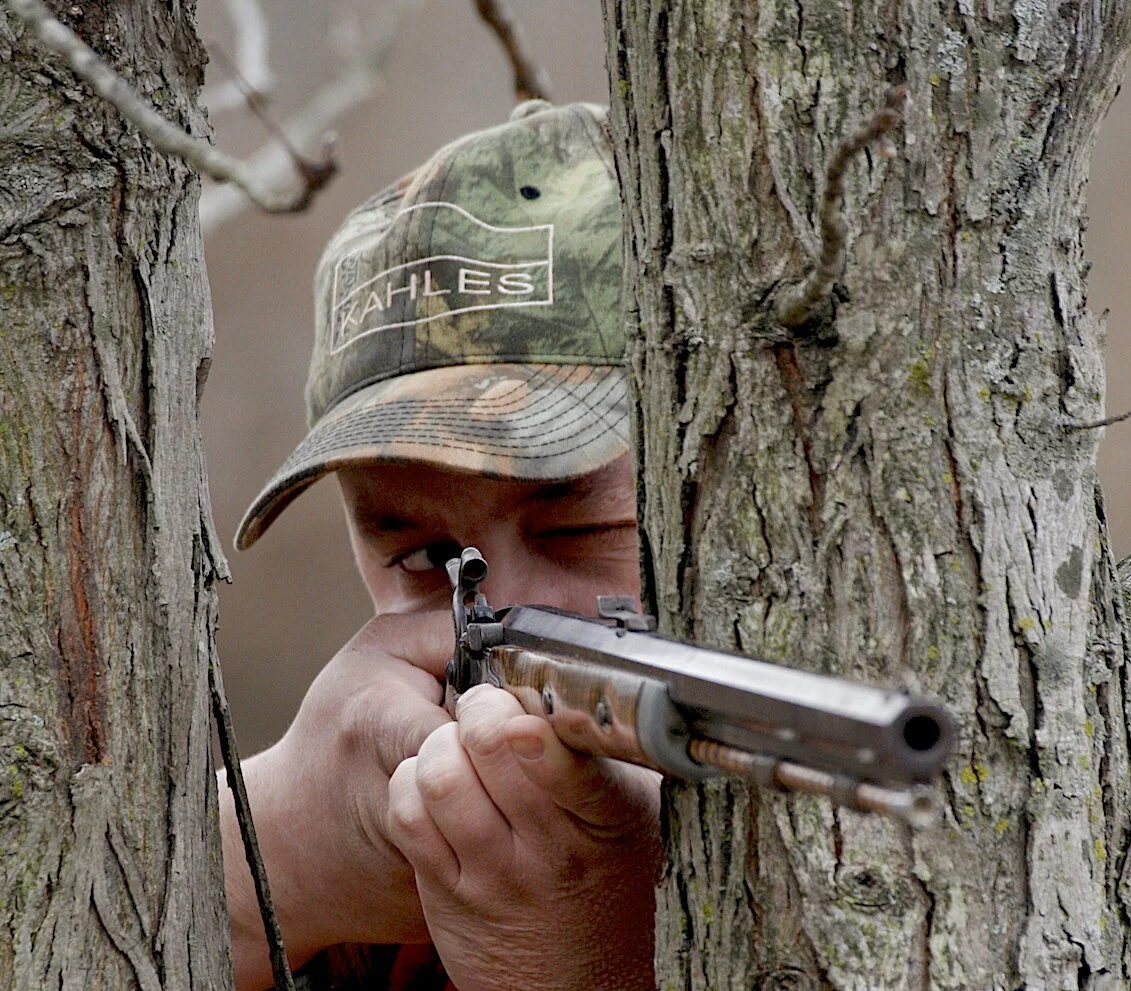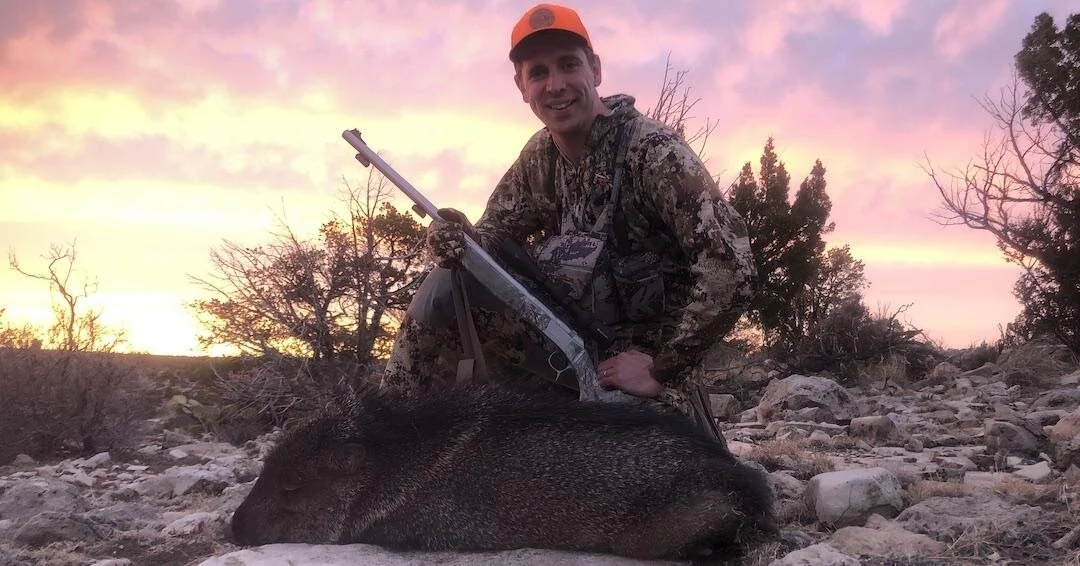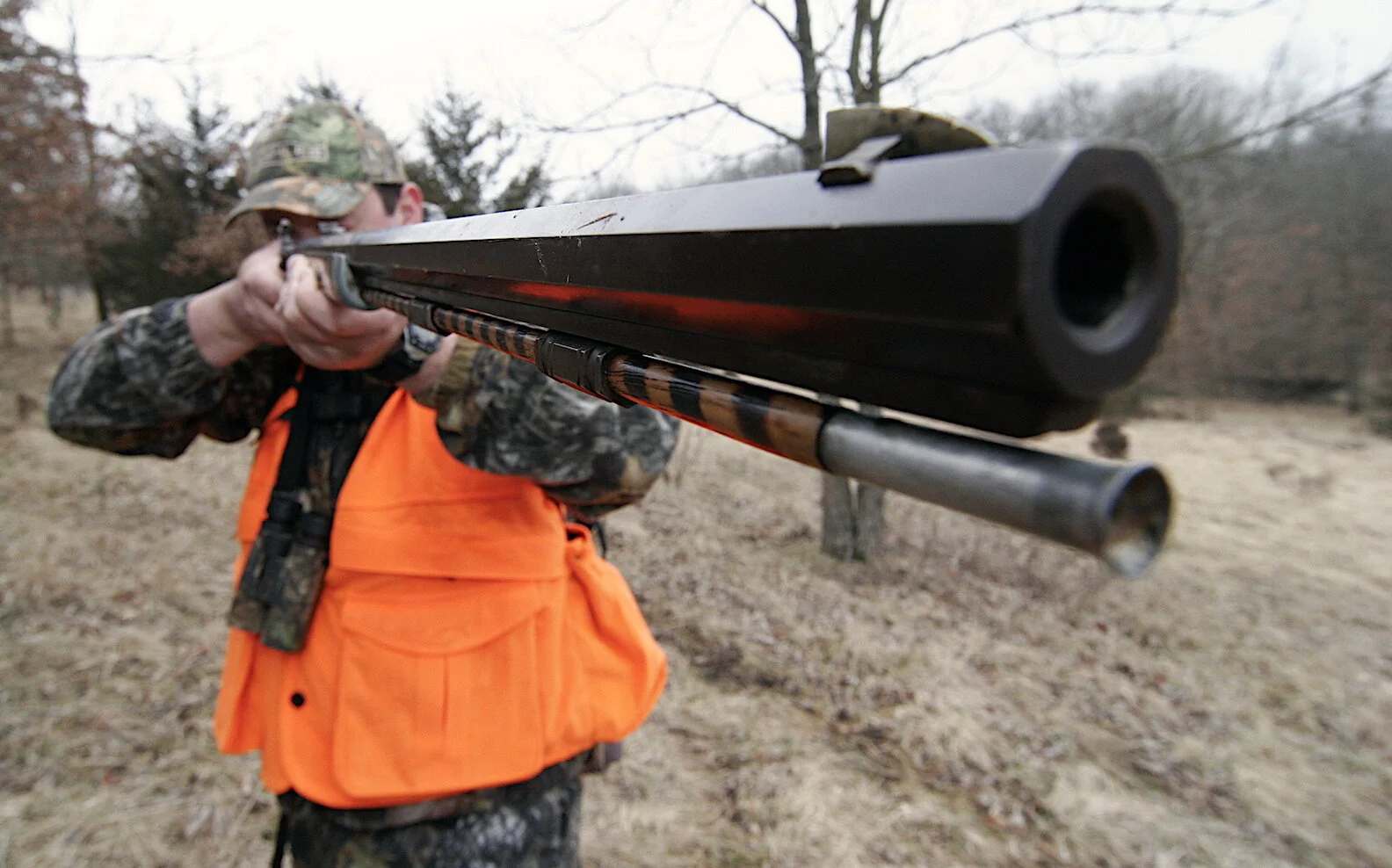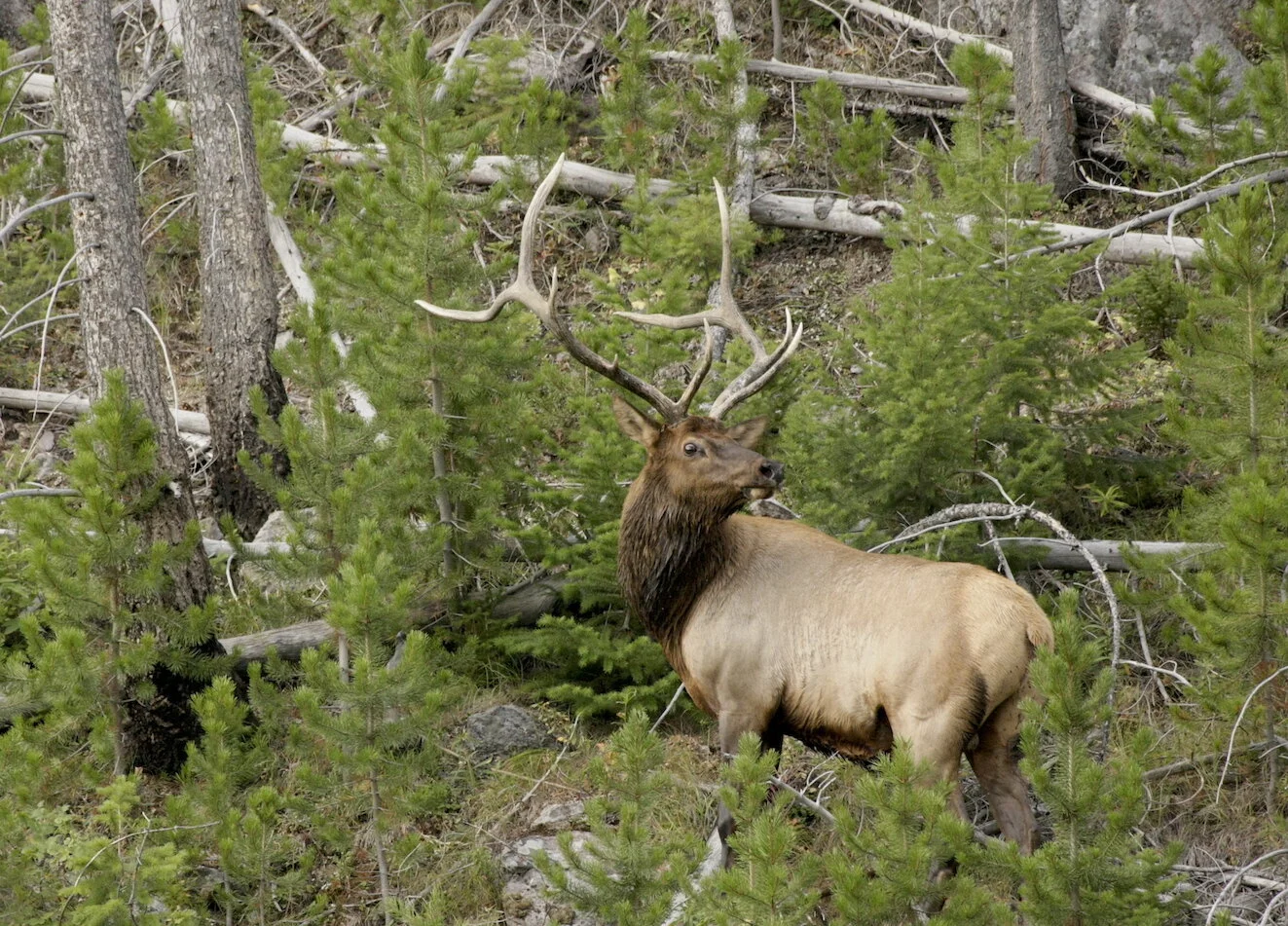Benefits Of Hunting With A Muzzleloader
photo by Ron Spomer
The vast majority of hunters in the United States these days likely use modern firearms or archery equipment—especially with the flood of new people who have started hunting for the first time in 2020 and 2021. There’s not a darn thing wrong with going afield carrying a bow or a centerfire rifle, but the focus on those methods of take by most hunters presents an opportunity for those who want to stand out from the crowd: hunting with a muzzleloader.
Images of hunters like Daniel Boone or Davy Crockett likely spring to mind when most people think about hunting with a muzzleloader. Plenty of hunters still go afield with a traditional flintlock or percussion cap rifles but, as you’ll learn here shortly, things have changed quite a bit in that field in recent decades.
Let’s discuss a few of the advantages of hunting with a muzzleloader and why you should consider going afield with one.
Are Muzzleloaders Good to Hunt With?
Muzzleloaders can be extremely effective in the right hands.
Hunters in the 18th and 19th Centuries used muzzleloaders to successfully take virtually every species of big game of North America. So, it’s absolutely possible to cleanly and quickly take all manner of game with a patched round ball fired from a flintlock muzzleloader. Lots of hunters still do exactly that each year in North America.
However, we have access to much more advanced inline muzzleloaders these days than hunters did even 20-30 years ago. Those newer muzzleloaders offer dramatically improved performance compared to older inline muzzleloaders and more traditional flintlock and percussion cap muzzleloaders due to advances in powder, bullet, and rifle manufacturing technology.
Specifically, modern inline muzzleloaders offer more reliable ignition, excellent accuracy, more impressive external ballistics, a longer effective range, and outstanding terminal performance to hunters.
It’s important to note that longer range is a relative term though. A modern inline muzzleloader with a scope, a good black powder substitute, and a well-designed conical bullet still can’t touch the effective range of a centerfire rifle chambered in a high velocity cartridge.
Even so, a typical hunter using modern inline muzzleloader set-up will probably be able to consistently hit a target at longer range than that same hunter using a flintlock musket with iron sights, a patched round ball, and true black powder.
There are exceptions, but a typical inline muzzleloader probably has a maximum effective range of around 150, maybe 200 yards for typical hunting applications. However, that’s plenty of range for the majority of all hunters in the United States though, especially for hunters east of the Mississippi River.
Now that we’ve discussed the efficacy of muzzleloaders, it’s time to discuss one of the biggest reasons you should consider using one: hunting with a muzzleloader often results in additional hunting opportunities.
What Are the Benefits of Using a Muzzleloader?
The exact details vary depending on exactly where you’re hunting, but those additional opportunities can sometimes result in increased bag limits, fewer restrictions on what constitutes a legal animal, and the ability to hunt in areas where modern firearms are not allowed.
For example, I originally started using a muzzleloader back when I lived in Georgia in order to lengthen the amount of time I could hunt deer each year. In Georgia (and in many other states), you can legally hunt deer during the archery, muzzleloader, and modern firearm deer seasons as long as you use the appropriate equipment during each season.
The muzzleloader deer season normally starts a week prior to the rifle season in Georgia. So, I’d hit the woods and hunt with my muzzleloader for a full 7 days before switching over to my rifle when that season opened. Especially for those who don’t bow hunt, using a muzzleloader is a great way to simply spend more time in the woods hunting.
Additionally, some states offer special hunting seasons for short range weapons. Arizona is a great example of this with their HAM (Handgun, Archery, and Muzzleloader) hunts for javelina each spring. Compared to the general javelina hunts, those HAM tags are often easier to draw, are a few days longer, and occur a little earlier in the year.
Using a muzzleloader can also allow you to access certain areas where hunters are not permitted to use modern firearms. I’ve done quite a bit of deer hunting (and had a pretty good amount of success) with my muzzleloader over the years in areas open to those using archery equipment, shotguns, and muzzleloaders, but not centerfire rifles.
In that same line of thinking, compared to the archery and general firearm hunting seasons, very few people hunt with a muzzleloader. That usually translates into fewer encounters with other hunters while you’re afield.
My experiences back when I lived in Washington illustrate this situation well.
Washington has lots of public land and some excellent deer and elk hunting. However, the state also has a bunch of hunters and issues a very large number of over the counter hunting tags.
In 2020, just under 6% of the deer hunters in Washington (6,083 out of 107,586) used a muzzleloader while about 79% of hunters used modern firearms and just over 15% hunted with a bow. Interestingly, success rates for rifle, muzzleloader, and bow hunters in the state were virtually identical during the general deer seasons as well.
Those statistics match up very well with my personal experiences hunting with a muzzleloader on public land in Washington. I typically hunted a pretty large tract of Forest Service land in the eastern part of the state that offered some excellent mule and whitetail deer hunting. That area was a very popular destination during rifle season, but I’d normally only see a couple of other hunters there during muzzleloader season.
Next, the smaller number of muzzleloader hunters can also translate into a much smaller pool of applicants for drawn hunts. The really premium tags still aren’t easy to draw, but special permits for muzzleloader hunts are still often easier to obtain than comparable rifle or archery tags.
All things considered, there are some real gems out there for muzzleloader hunters who look hard enough. The details of course vary from state to state and hunt to hunt, but it’s possible to draw a good muzzleloader tag in many units 2-3 years earlier than a rifle tag in the exact unit.
Regardless of whether you’re using an over the counter tag or you drew a special permit, muzzleloaders are challenging, fun, and satisfying to hunt with.
What Are the Cons of Using a Muzzleloader?
There are exceptions, but most muzzleloaders fire a large diameter and relatively heavy projectile at a moderate velocity. Specifically, the majority of muzzleloader hunters these days use a .45, .50, or .54 caliber muzzleloader firing 170-380 grain bullets at 1,500-2,000 feet per second.
photo by Ron Spomer
Those loads are extremely effective on game like deer and black bear. They’ll also work quite well on really big game like elk and moose. Those slow moving bullets aren’t usually very aerodynamic, so they are most effective at short to moderate range.
Like I mentioned earlier, that’s not too much of a disadvantage for many hunters. I can count on my fingers how many times I’ve taken game at ranges exceeding 150 yards in my entire life and I’d wager most other American hunters had had similar experiences.
There are a couple of other significant disadvantages to using a muzzleloader though.
First, they produce a lot of smoke when fired. A brisk wind will quickly clear the smoke, but it can really hang around on calm days in thicker conditions. This can make it much more difficult to determine where your shot hit or even what direction the animal ran after the shot at times when the smoke is really bad.
Additionally, muzzleloaders are much slower to reload than a modern breech-loading rifle. It’s certainly possible to reload fast enough to make a follow-up shot on an animal, but situations where game hangs around long enough to do that are pretty rare.
photo by Ron Spomer
For this reason, it’s extremely important for you to really make your shots count.
That leads me to another one of the fun and challenging aspects of hunting with a muzzleloader: closing the distance.
Though a hunter using a muzzleloader usually won’t need to get quite as close to game as a bow hunter will, those hunters still normally need to get much closer than the average rifle hunter. Doing so isn’t easy, but that’s a big part of the fun associated with muzzleloader hunting. It’s also incredibly satisfying when it all comes together.
Some people also find the process of fine tuning their hunting implement very satisfying as well.
Well, just like a rifle hunter developing a custom handload, muzzleloaders are also great for those who like to tinker. It’s also fine if you’re not that sort of person. Similar to factory loads with rifles, there are some common standard loads that will also work just fine for many hunting situations.
Muzzleloaders are especially well suited to experimentation.
Hunters unhappy with the performance of their muzzleloader can easily switch to a different bullet type or weight. By the same token, switching over to a different primer brand, for varying the exact amount of powder used in a load, or even switching over to a completely different type of powder is also very easy.
For example, a hunter could start off with a 250 grain Barnes T-EZ bullet pushed by 100 grains of loose Triple Seven powder and a Winchester 209 muzzleloader primer. That’s a great load for deer.
If accuracy isn’t quite up to par with 100 grains of powder, it’s very easy to experiment with 80, 90, or 110 grains of powder and see if that produces better results. If that doesn’t work, switching over to a different powder and/or primer, like Blackhorn 209 or a CCI Magnum 209 primer, is also an option.
The possibilities here with all the different bullet, powder, and primer combinations are virtually endless. Most of them work pretty well, but a careful and persistent hunter should be able to develop a load that delivers the exact performance they’re searching for.
Should I Use a Muzzleloader?
Getting started hunting with a muzzleloader does take quite a bit of energy and attention to detail. However, the benefits associated with doing so are worth the effort and successfully taking game with a muzzleloader is incredibly satisfying.
Learn More Here: 15 Best Muzzleloaders For Hunters








